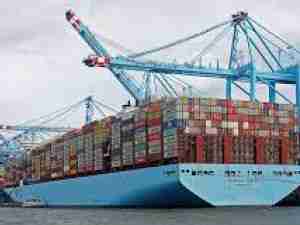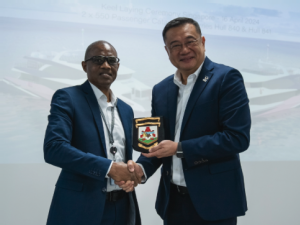The containerized shipping industry must come to better grips with its dynamic growth, according to Peter I. Keller, executive vice president and chief operating officer, NYK Line (Americas).
"The biggest mistake we make in this business is that we underestimate our growth," Keller told attendees of the TOC 2005 Americas terminal operations conference and exhibition Nov. 29 in Savannah, GA.
Keller, a 40-year industry veteran who also has held executive posts with Sea-Land Service, CAST North America and The CAST Group, said he expects industry demand, particularly in the retail sector, to continue unabated, with strong volumes in all international trades.
To keep pace, he said, the industry will have to augment infrastructure and enhance productivity.
"We need to rethink the process we have gone through since containerization started ' it'll be 50 years ago next year," Keller said.
One way to make better use of assets is to expand the presence of chassis pools, said Keller, who chairs the Ocean Carrier Equipment Maintenance Association (OCEMA). He said he expects that to occur in 2006 and 2007, including in the South Atlantic, along the West Coast and at inland sites, such as Denver.
Ports also need to expand berthing capacities, he said, commenting, "Certainly, infrastructure will continue to be the major limiting factor. The problem will be: Where do we park the boats?"
Productivity must improve, too, he said, noting that most US ports have yet to attain the world standard of 40 to 45 container crane moves per hour. Keller said Savannah and Charleston regularly get 40 moves an hour and New York is achieving 30 moves an hour, but 25 moves per hour is typical on the US West Coast.
Keller also called for improvements in the ability of intermodal partners to move freight through better rail and highway connections. This is particularly important, he said, at a time when customers are demanding more comprehensive service offerings, greater visibility throughout the cargo movement cycle and assured supply chain security.
"We're meant to do all this while maintaining a reasonably stable cost structure," Keller said. "It all ultimately comes down to price."
Looking to the future, he commented, "Lines that can deliver integrated supply chain solutions that meet specific customer demands will dominate."
Keller said he sees the trend toward larger container vessels continuing, resulting in the "cascading" of each smaller class of ship into the next level of port markets. But ultimately, older vessels, including many with capacities of 4,000 twenty-foot equivalent container units, must wind up being scrapped.
"There needs to be a lot more scrapping of the older tonnage," he said. "They'll come back as Toyotas."
Keller added, jokingly, that this time of year he encourages employees to head to the stores and spend money so that they will have jobs in the coming year.
"Unfortunately," he said, "the liner business is a captive of Christmas."










